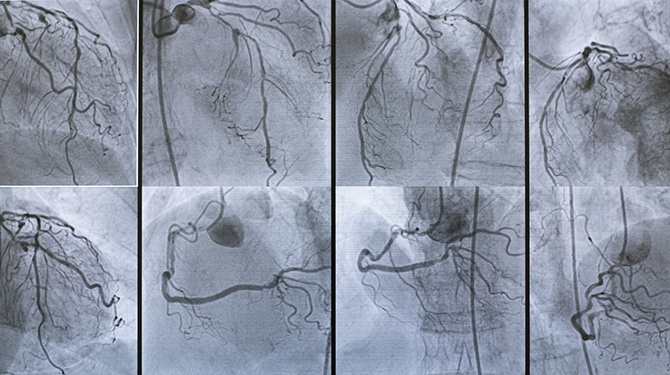 Angiogram uses X-ray imaging and a contrast agent injected through a catheter to find, evaluate and treat blocked or damaged blood vessels. Performed by an interventional radiologist, angiogram shows how blood flows through any part of the body and helps doctors decide the best course of treatment if an abnormality is found.
Angiogram uses X-ray imaging and a contrast agent injected through a catheter to find, evaluate and treat blocked or damaged blood vessels. Performed by an interventional radiologist, angiogram shows how blood flows through any part of the body and helps doctors decide the best course of treatment if an abnormality is found.
Your doctor may order an angiogram to diagnose or treat an aneurysm, carotid artery disease, coronary artery disease, peripheral artery disease (PAD), pulmonary embolism or any other abnormality in a blood vessel.
Angiogram is an outpatient procedure that can take anywhere from 20 minutes to a few hours to complete. The length of the procedure depends on the location of the affected blood vessel and if your physician will be treating the affected blood vessel or only obtaining X-ray images to make a diagnosis.
You can expect the following on the day of your procedure:
You will go home the same day of the procedure after a short observation period. Because you may receive a sedative, you should plan to have someone drive you to and from the procedure.
Upon your return home, you should rest for at least six hours before returning to your regular activities. Be sure to follow all of your physician’s orders for a proper recovery.
Your angiogram care team may include specialists from these services: